Welcome to Ceramic Review
Ceramic Review is the magazine for contemporary and historical ceramics, ceramic art and pottery.
Ceramic Review Issue 330
November/December 2024
Ceramic Review is the magazine for contemporary and historical ceramics, ceramic art and pottery.
November/December 2024
Emma Lacey is produces timeless and durable ceramic wares. She spoke to Annie Le Santo about her creative journey and the importance of longevity
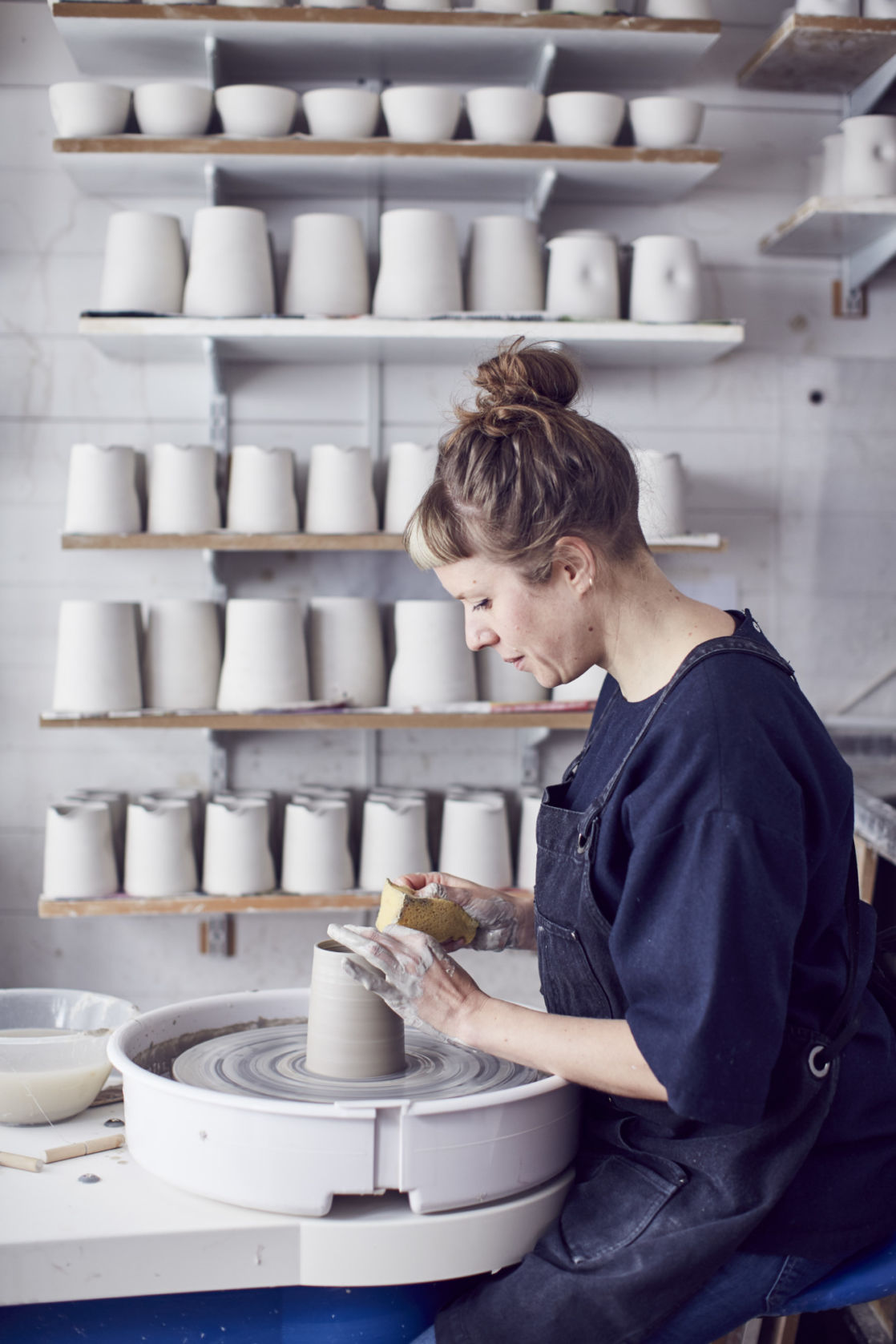
Ceramic Artist Emma Lacey photographed by Alun Callender for House Beautiful
In a world where our relationship with ‘stuff’ is increasingly complex, Emma Lacey’s ceramics are a source of solace. Her handmade functional wares offer an alternative to the mass-produced mayhem, while honouring the need for timeless designs that will not go out of fashion or need replacing if you decide
to renovate your kitchen. It sounds simple, but it has taken Lacey over 20 years of honing her skills, developing her ideas and affirming her values to build a successful and sustainable ceramics business.
DISCOVERING MATERIAL
Lacey considered herself as an ‘all-rounder’ while growing up. She was born in Haringey, North London, where she still lives and works today. Her family is firmly rooted there; her children are growing up in the same house she did and attending the same local school. ‘I knew I loved using my hands and making things at school, but I was never particularly encouraged by teachers at that stage,’ she explains. ‘It wasn’t until I attended a YMCA youth club that I had a go at throwing something on a wheel and was intrigued by the process.’
She joined a nearby evening ceramics class run by Romilly Graham at the age of 16. ‘It was around the same time that I started to go out to raves, so I was a bit of a “North London raver” who spent an evening a week with older ladies making pots,’ Lacey jokes. ‘But Romilly was wonderful. She was a big influence on me as a teenager and these two sides of my personality came alive.’
Soon after, Lacey visited the Art Foundation open day at Middlesex University at the recommendation of her art teacher. ‘It was the best advice I could have been given,’ she says. ‘I believe in Art Foundation courses and having since become a tutor myself, I see how the students are those that perhaps don’t fit into a traditional academic framework. The course helps people find themselves. I suppose that is what happened for me – it was when I realised I was good at thinking through three-dimensional materials.’
Lacey spent a year at Middlesex working with metal, wood, and plastics, but little clay. However, the year cemented a deep interest in material integrity that has informed her life since. She moved on to study 3D Design at Brighton University, and it was here that her teenage love affair with clay was reignited and elevated into a professional context. ‘Ceramics allowed me to tap into my intuitive interest of making without having to be too decisive. The fluidity allowed me to work freer and open up a conversation with myself and the material,’ she says. ‘I have always been interested in how light and shadow would fall. The dent in my forms you see today was born from my time at Brighton. I was throwing vessels and manipulating them in various methods: cutting them up and putting them back together, and I began softly pressing the dents into them.’
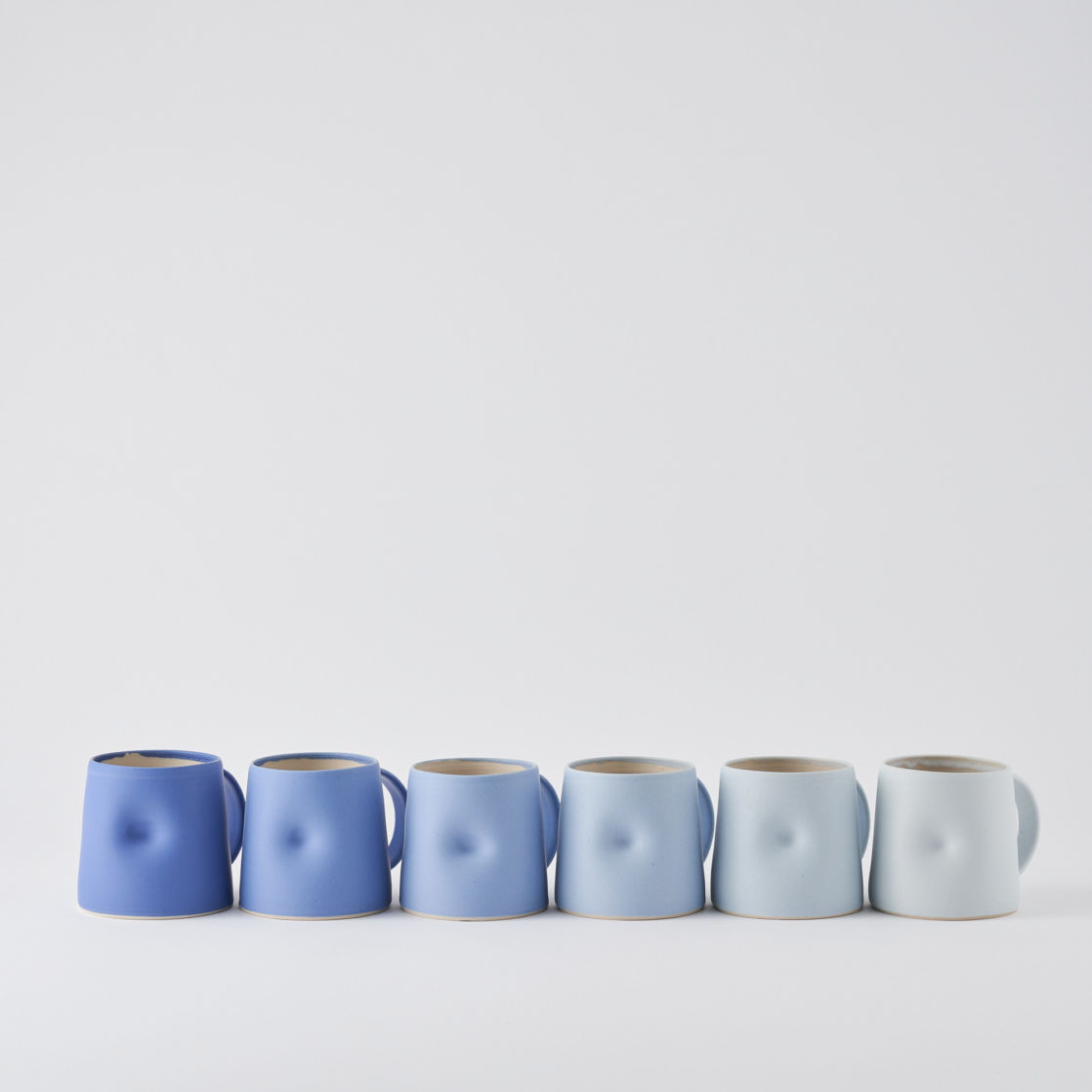
Blue Scale Everyday Mugs - Photography; Yeshen Venema
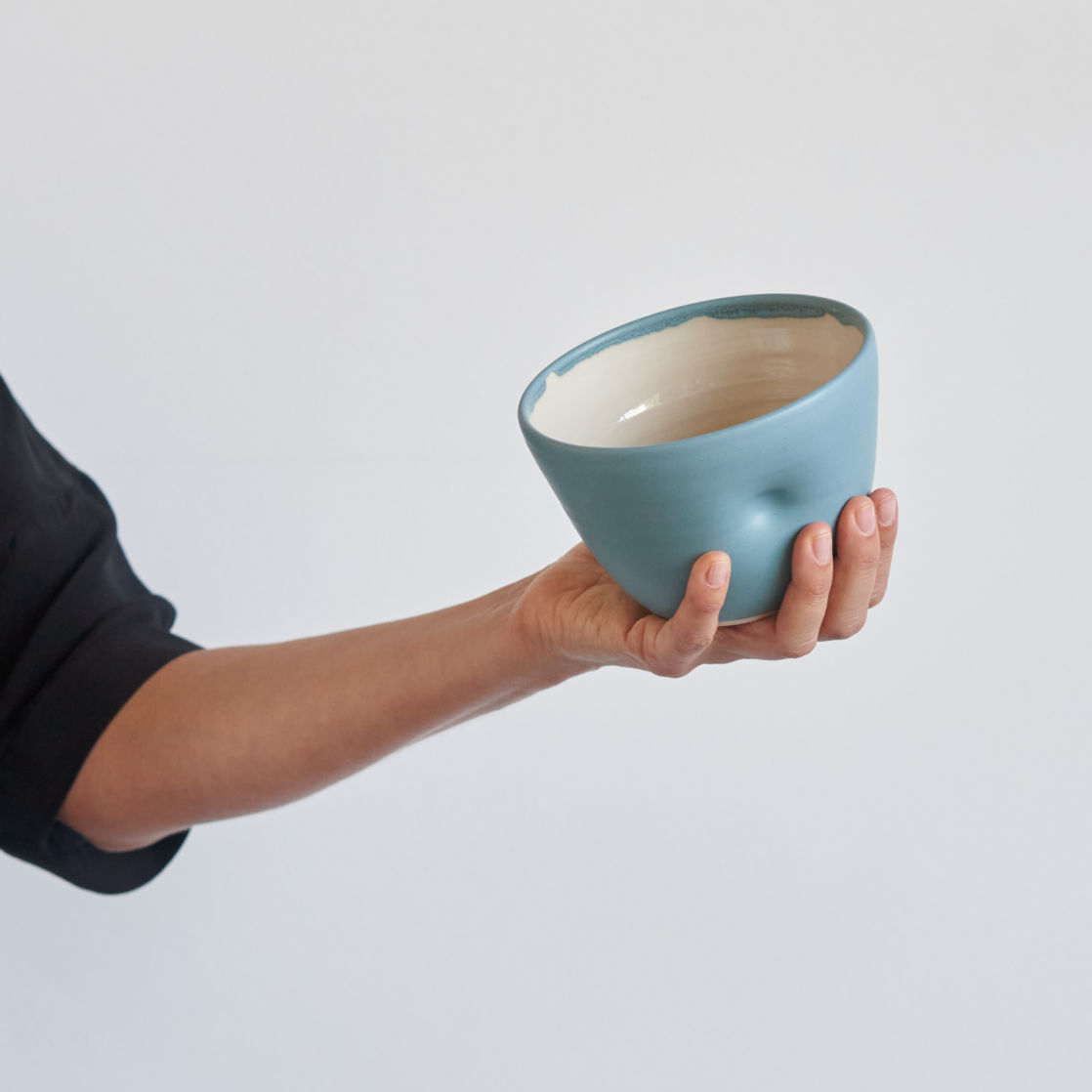
Everyday Breakfast Bowl - Photography; Yeshen Venema
FUNCTIONAL FORMS
Lacey’s ceramics at this time were informed by the abstract shapes of the human body. The indent in the centre of her pieces – her signature mark – invites their user to hold and engage with them in ways that are specific to their own hands. She acknowledges that she is not the pioneer of dented ceramics, they have been around for thousands of years. However, when you learn of the extent that she has delved into her making processes, the sense of individuality in her work becomes clear. In her career, Lacey has worked in factories, studios in the UK and abroad, and taken part in experimental and academic projects globally. ‘Even though the dents have become my signature, there are all sorts of other hidden parts to my story,’ she explains. ‘When I show my students images of all the things I have made in the past that I don’t make any more, they can see where the details in my work today come from. Every little proportion or surface detail is informed by decades of experience with other materials in different contexts.’
In the summer after her undergraduate degree, Lacey assisted German potter Karin Putsch-Grassi in Italy. While helping at the studio, she had the time to develop her own thoughts and skills. ‘We would visit the markets in Florence, and I would watch people buying functional ceramics,’ she explains. ‘My degree was so much about my own relationship with materials, that until this moment I hadn’t given much thought about the object’s final relationship with the end user.’
This was a pivotal realisation, and Lacey began to add handles to her vessels transforming them into mugs and jugs. ‘I had a revelation that not only did my pieces have an aesthetic language that spoke of the body, they had become ergonomic and related to people and their bodies through that way too.’
Since that revelation, Lacey has completed an MA in Design at Central St Martins (CSM), taught at a number of art institutions (including on the BA Ceramics course at CSM), launched the ceramics business that she continues to run today, and has seen her wares on the shelves of high-end retailers. ‘During my Masters, we would have seminars about building your brand. Some parts of this I found exciting and others deeply uncomfortable,’ she says. ‘I knew I wanted to make multiples of pieces for everyday use, but it was in the mid-2000s, the time of the iPod and IKEA. I was coming from a deeply personal relationship with my material to feeling like I was going to just be making more ‘stuff’ to put out into the world.’
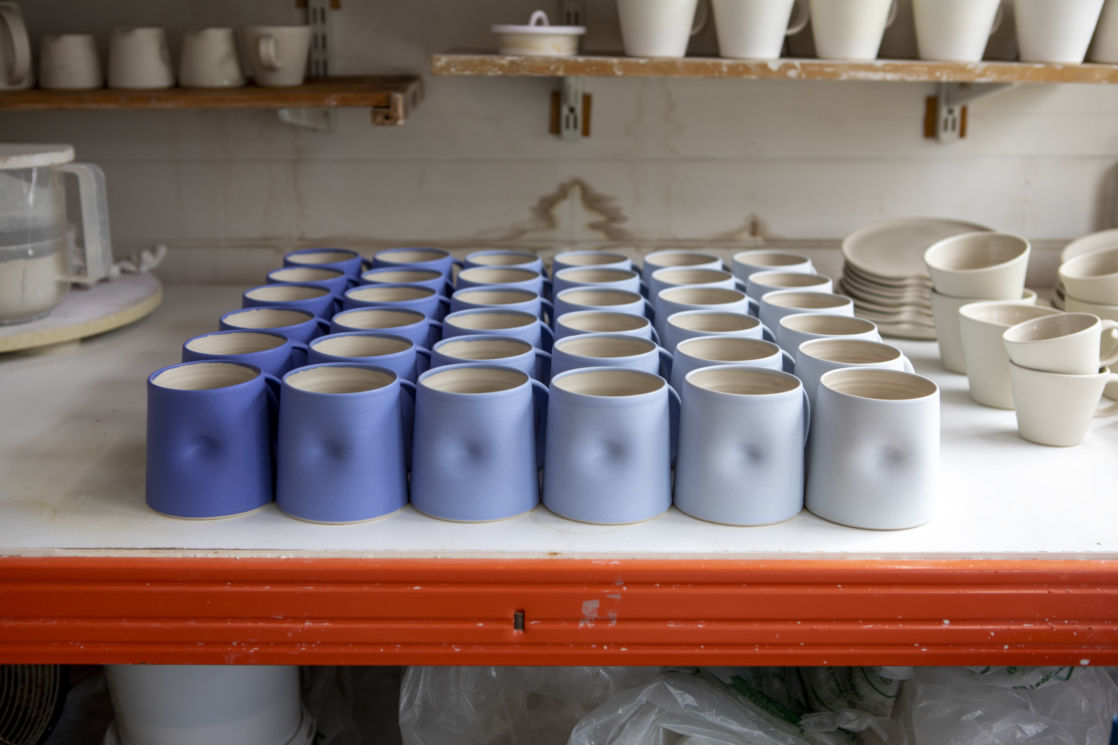
Limited Edition Blue Scale Everyday Mugs in studio - Photography; Adrian Lourie
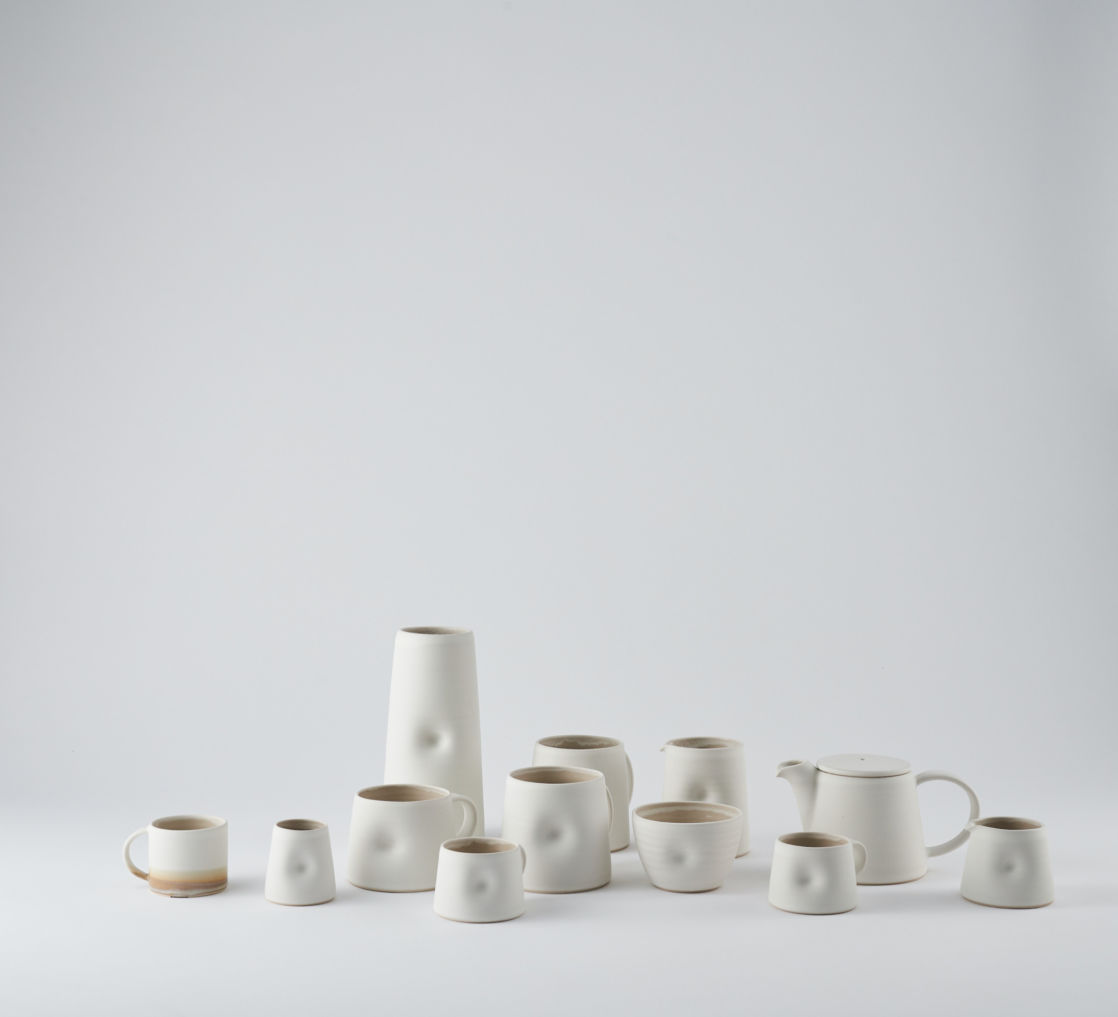
Handthrown Collection - Photography; Yeshen Venema
Cautiously, Lacey launched her Everyday range in 2007 – you can still find it on her website today. She felt a responsibility to be as intentional as possible and not waste money or materials by making vast amounts of varying or experimental designs that may or may not be well-received by customers. The pieces are thrown extra-thin, but they are made from high-fired stoneware and are therefore extremely durable.
They have a simple elegance and were quickly noticed by The Conran Shop. Known for iconic homeware that continues to be endlessly trendy regardless of the decade you are in, The Conran Shop and the Everyday range were a match made in heaven. ‘I was firm that I was a shape designer only, and I launched the range in plain white. However, the buyer wanted to see them in colour,’ Lacey says. ‘Of all the places I wanted to see my work, it was The Conran Shop. So needless to say, I made the range in colour!’
An initial order of 500 was placed. More followed, and Lacey’s work continues to grace the shelves of the shop today. The addition of colour allowed for an element of choice for customers without the need to produce frequent, new seasonal ranges. ‘I try to encourage longevity. I want people to fall in love with my pieces rather than have an affair with them,’ Lacey explains.
SOCIALLY CONSCIOUS
Perhaps reminiscent of her time spent working with ceramics factories, everything about Lacey’s practice today is as efficient as possible. She makes an effort to be environmentally and economically conscious: conducting minimal firings, donating spare clay to local schools, and using only recyclable materials as packaging. These values are being taken a step further in an ongoing project with Sara Howard, a graduate of CSM, to see if together they can develop a glaze that reuses industrial waste.
These kinds of projects are important to Lacey. To accommodate them, she splits her time 50:50 to teaching and making. ‘I like to keep new concepts and projects on the horizon,’ she says. ‘I am interested in exploring how they can bridge the gap between my teaching and my practice.’
Lacey has formed a life for herself that combines these areas in a socially conscious and elegant way. Her relentless dedication to durable design is evident in the simple, understated forms that she creates, and in her success as a tutor. Both of these areas in Lacey’s career are driven by two things: her obsession with her material, and her love of engaging people through it.
For more details visit emmalacey.com
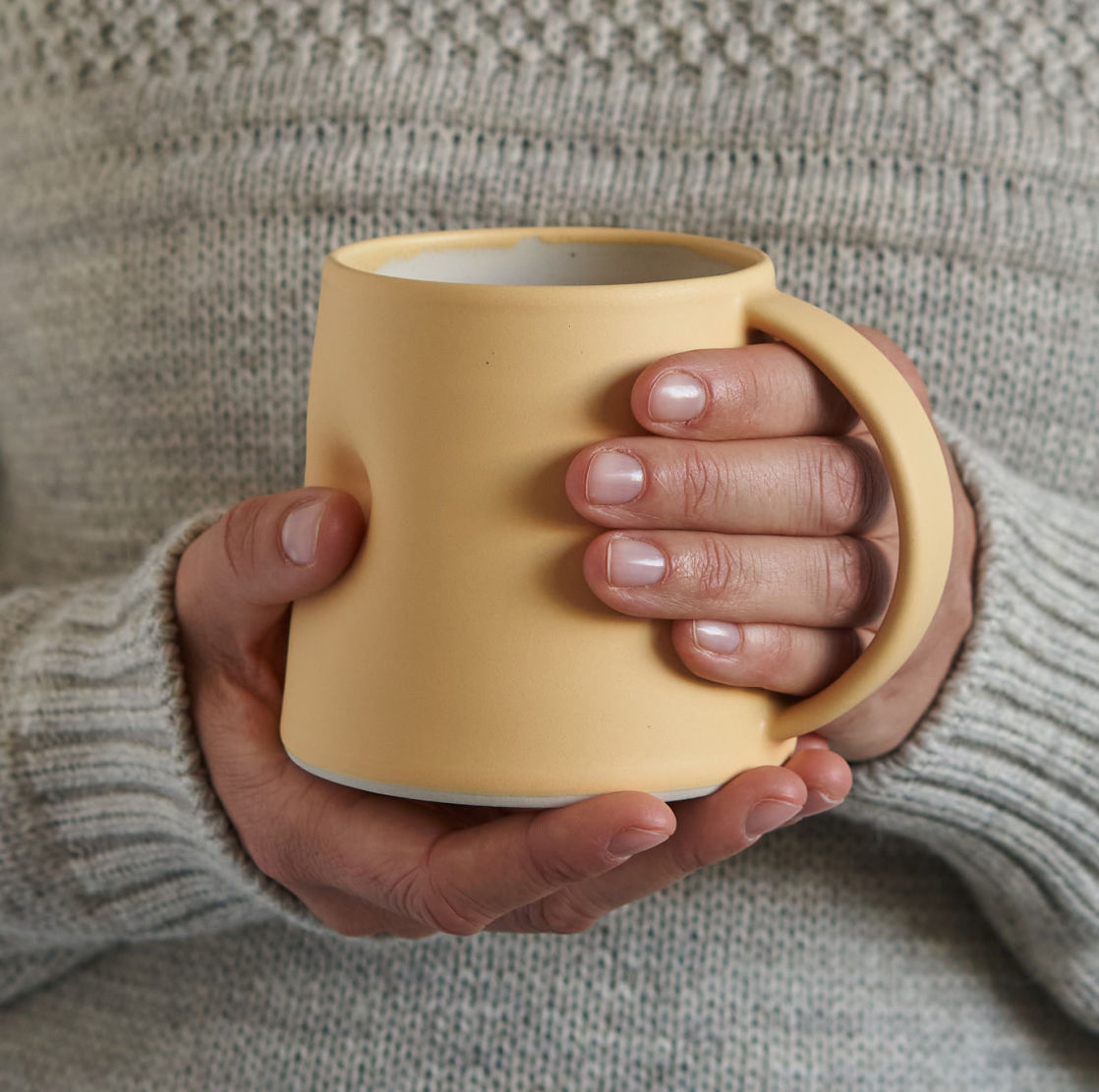
Mustard Everyday Mug - Photography; Yeshen Venema